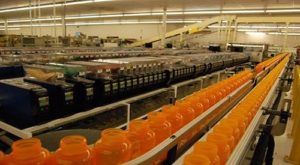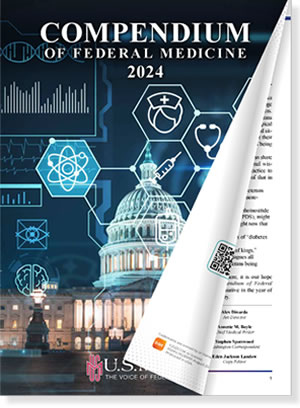
More than 80% of medications are refilled through seven highly automated and centralized mail order pharmacies (CMOP) at the VA, one of which is shown here. VA photo
PALO ALTO, CA — The U.S. Postal Service (USPS) has long been the most popular government institution in the country, but cascading delays in the last eight months have threatened its preferred position as both businesses and individuals suffer from lost and stranded mail and packages. Veterans have been particularly hard hit by slowed service, a point made by many legislators in a rancorous hearing and blunt statements in late February.
“Months after Postmaster General [Louis] DeJoy implemented disastrous changes in the USPS, families, seniors, and veterans across New York State continue to face significant delays for vital deliveries. We know that households are relying on timely USPS services more than ever due the pandemic, and DeJoy’s failure to address lagging operations have placed a great burden on those hit hardest by the pandemic,” said Sen. Kirsten Gillibrand (D-NY).
Those vital deliveries for veterans include their medications, more than 80% of which are refilled through seven highly automated and centralized mail order pharmacies (CMOP). Since 2009, the VA’s mail order pharmacies have consistently been rated “among the best” in the nation in terms of customer service, according to the annual J.D. Power Pharmacy Study.
“J.D. Power has scored VA’s CMOP as highest in overall customer service satisfaction nine out of the past 10 years,” said former VA Secretary Robert Wilkie. “These results demonstrate VA’s commitment to ensuring that our nation’s veterans are receiving the best possible service for prescriptions delivered directly to their homes.” The VA mail order pharmacies continue to quickly fill and send out prescriptions, but delays in delivery by the post office have caused some veterans to go without medications on regular refill schedules for weeks, and even months, as packages remain in limbo.
“U.S. Postal Service customers in many states have endured delays and other problems with mail service for months. Veterans going without medication . . . small businesses missing delivery dates, struggling families missing paychecks and not receiving notices of premiums due in time,” pointed out Sen. Dick Durbin (D-IL). “Timely, reliable mail delivery is always important and especially critical now. Receiving medications and other important deliveries enables people to stay safely at home rather than venturing out and risk spreading or acquiring COVID infections.”
While deliveries remain slow, timely deliveries hit an all-time low at the end of last year. “In December 2020, first-class mail on-time delivery rates averaged just 52.4% in the Northern Virginia Postal District (Capitol Metro Area), 55.1% in the Richmond Postal District (Capitol Metro Area), and 67.0% in the Appalachian Postal District (Eastern Area),” wrote Virginia Sens. Mark Warner and Tim Kaine, both Democrats. “These rates represent drastic declines relative to baselines in on-time delivery from March 14, 2020 – July 11, 2020, the period between the onset of COVID-19-related impacts and the announcement of your operational changes. The on-time delivery rates of first-class mail in this time frame was 90.9% in the Northern Virginia Postal District, 90.3% in the Richmond Postal District, and 93.8% in the Appalachian Postal District. . . we must assume that vital packages, including medicine, are also experiencing substantial delivery delays.”
Slow Medication Delivery
A recent preprint study by two researchers at Stanford University in Palo Alto, CA, and Heidelberg University in Heidelberg, Germany, assessed the impact of mail delays on health for individuals like veterans who depend on mail order pharmacies.1 They found that a national slowdown could have significant consequences, particularly as the COVID-19 pandemic continues and drives more people to turn to deliveries to limit exposure to the virus.
The researchers conducted a weekly survey in August 2020 of 500,217 adults in the Medical Expenditure Panel Survey group who had responded in 2019 to the National Health Interview Survey. They also analyzed results from previous MEPS, which were linked to pharmacy records, to understand the change in mail order pharmacy use over time, which roughly doubled from 1996 to 2018.
One in four participants reported delays or non-delivery of medications during the previous week. “Given anecdotal reports that many patients have switched to mail-order prescriptions since the start of the SARS-CoV-2 epidemic to prevent potential exposure to infection in stores, demand for mail-order medications – and thus reliance on the USPS mail delivery system – has likely risen over the past months,” they noted. USPS is estimated to deliver 55% of U.S. prescriptions.
The most commonly filled mail order prescriptions in the general U.S. population were analgesics such as acetaminophen-hydrocodone and prescription strength ibuprofen, thyroid hormones, cardiovascular medications, antibiotics, cholesterol drugs, and diabetes medications. Estrogen and bone resorption inhibitors were also frequently filled by mail.
“Medications most commonly delivered by mail included those for which missing several doses does not result in immediate adverse health consequences (e.g. statins), but also those for which missing a dose could be detrimental to the patient’s health (e.g. insulin), produce considerable discomfort (e.g. analgesics), have negative consequences for public health (e.g. antibiotics for which delayed or lacking mail-order prescriptions may result in incomplete antibiotic courses and, thus, an increased risk of antibiotic resistance), or that could be critical in sudden deteriorations of a chronic condition (e.g. albuterol),” the researchers found. Delays in delivery of some of the medications, such as those for asthma or chronic obstructive pulmonary disease or diabetes, could induce medical emergencies.
Delays often increased copay costs as patients refilled late refills at local pharmacies and lost the higher cost-sharing percentage insurance companies often offer to incentivize mail order medications. Many other medications could not be filled locally because of their specialty nature or local shortages during the pandemic, leaving patients without their prescriptions for extended periods.
Individuals in the poorest health, who face challenges getting to a local pharmacy and the greatest risk from COVID-19, would face the greatest burden, the authors noted. “Our analysis highlights that any disruption in the postal service could lead to important medical complications among a considerable proportion of the U.S. population,” they concluded. “These health consequences should be taken into account when weighing operational and funding changes to the USPS.”
- Do D, Geldsetzer P. Trends in Mail-Order Prescription Use among U.S. Adults from 1996 to 2018: A Nationally Representative Repeated Cross-Sectional Study. Preprint. medRxiv. 2020;2020.09.22.20199505. Published 2020 Sep 23. doi:10.1101/2020.09.22.20199505

